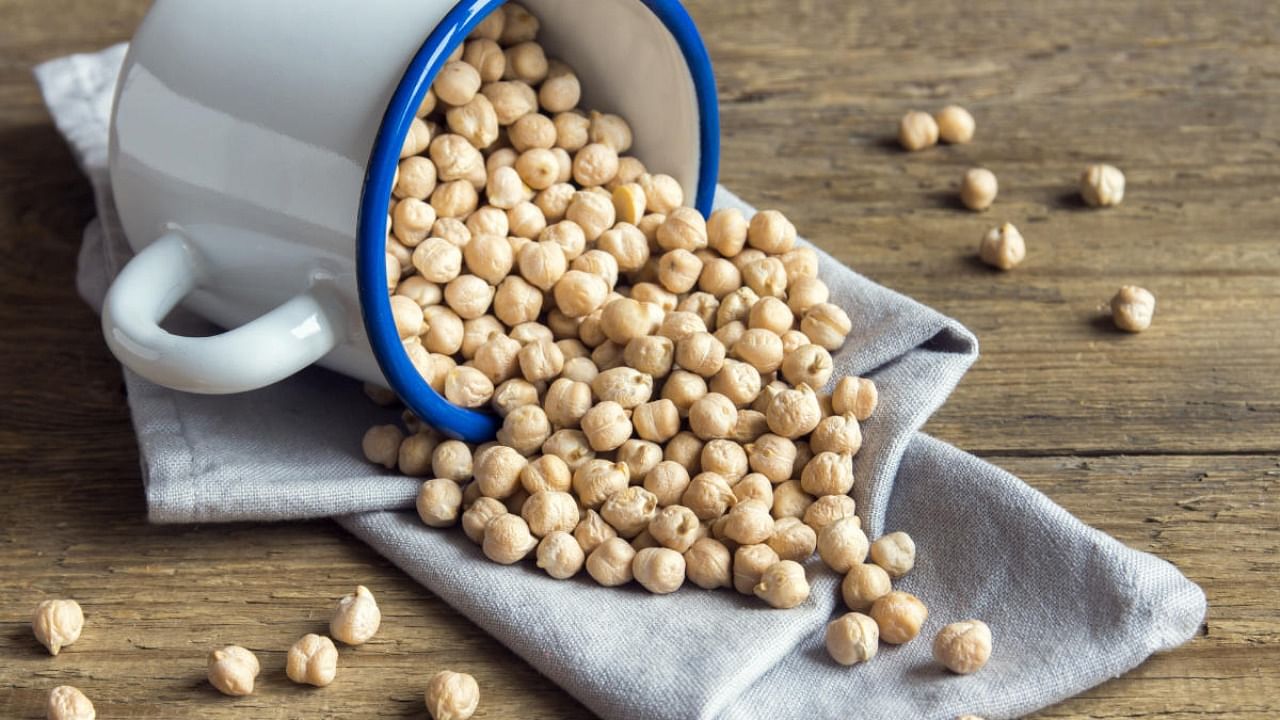
Leading the world's largest plant genome sequencing effort, Hyderabad-based scientists on Wednesday reported discovery of nearly 1,600 new chickpea genes that may be tweaked to create better yielding varieties of such legumes in future.
As many as 1,582 novel genes were found among 29,870 genes identified by an international team of scientists after sequencing 3,366 chickpea lines from 60 countries. The massive collaboration was led by a group of scientists at International Crop Research Institute for Semi Arid Tropics (ICRISAT).
“Currently India's chickpea productivity varies between 1-1.5 tonnes per hectare. Development of more resilient and drought tolerant varieties can increase the productivity by 1.5 to 2 times,” Rajeev Varshney, a research programme director at ICRISAT and leader of the study published in Nature, told DH.
Grown in more than 50 countries, chickpea is the world’s third-most cultivated legume. It is indispensable to diets in many nations and an important source of dietary protein, especially in the Global South.
Back in 2013, ICRISAT led the effort to sequence the first chickpea genome, which paved the way for developing molecular resources for the crop’s improvement.
A larger endeavour to sequence more chickpea varieties began soon after the first sequencing as the need to completely understand the genetic variation at species level, including in land races (domesticated varieties developed by farmers) and wild types, became apparent.
In the latest research, the authors report sequencing 3,171 types of chickpea varieties cultivated by the farmers and 195 wild chickpeas that are conserved in gene banks. These 3,366 varieties are representative of chickpea’s genetic diversity in a much larger global collection.
Worldwide pulse productivity has been stagnant for the last five decades, contributing to low per capita availability of these foods and high levels of malnutrition in developing countries.
“The demand for chickpea is set to increase in the coming years as the world’s population rises. Research like this is the need of the hour to help major producing countries like India boost crop production while making crops climate-resilient,” said Trilochan Mohapatra, director general, Indian Council of Agricultural Research (ICAR), and an author on the study.
The sequencing effort also affirmed the history of chickpea’s origin in the Fertile Crescent nearly 10,000 years ago and identify two paths of diffusion or migration of chickpea to rest of the world.
One path indicates diffusion to South Asia and East Africa, and the other suggests diffusion to the Mediterranean region (probably through Turkey) as well as to the Black Sea and Central Asia (up to Afghanistan). “It answers long pending questions on the crop's evolutionary history,” said Varshney.
Comparison of the genetic variation in cultivated chickpea with that of its wild progenitor helped the researchers identify deleterious genes responsible for lowering crop performance.
The deleterious genes were more abundant in the wild progenitor as they would have been purged to some extent in cultivated lines through selection and recombination. Scientists say such genes can be further purged in cultivars using genomics-assisted breeding or gene editing.
Furthermore, the study identified blocks of genes in landraces that can significantly enhance performance of the crop by improving traits like yield, climate resilience and seed characteristics.
Watch latest videos by DH here:
